انتقل إلى وضع عدم الاتصال باستخدام تطبيق Player FM !
Zoosiana’s Director – Matt Oldenburg
Fetch error
Hmmm there seems to be a problem fetching this series right now.
Last successful fetch was on January 06, 2025 09:59 (
What now? This series will be checked again in the next hour. If you believe it should be working, please verify the publisher's feed link below is valid and includes actual episode links. You can contact support to request the feed be immediately fetched.
Manage episode 456712673 series 1814016
Matt Oldenburg, Director of Zoosiana, is our guest today. The zoo has been a family passion for years, as it was originally purchased by Matt’s father, George Oldenburg, in 2002, after a successful banking career.
George transitioned into zoo ownership to pursue his love for animals. Over the years, Matt took on a leadership role, managing the zoo’s operations and its expansive collection of over 1,000 animals spanning 150 species. Never dreaming he would run the zoo, Matt majored in wildlife biology, as well as marketing and management. While his schooling came in handy, running a zoo is a field of study that you learn on the job.
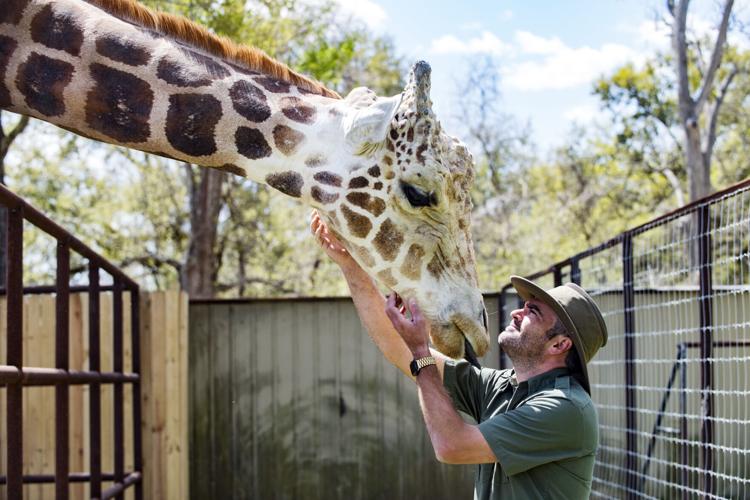
Zoosiana, one of the few privately owned and accredited zoos in the U.S., is known for its education and memory-making opportunities, community engagement, and family-friendly attractions. It features animal shows, a petting zoo, a Louisiana swamp exhibit, and unique animals like golden-striped Bengal tigers, giraffes, exotic birds, and much, much more. Incredibly, the zoo welcmes over 150,000 visitors annually. Zoosiana is open 9 to 5 daily, seven days a week, weather permitting, except for major holidays and hurricanes.
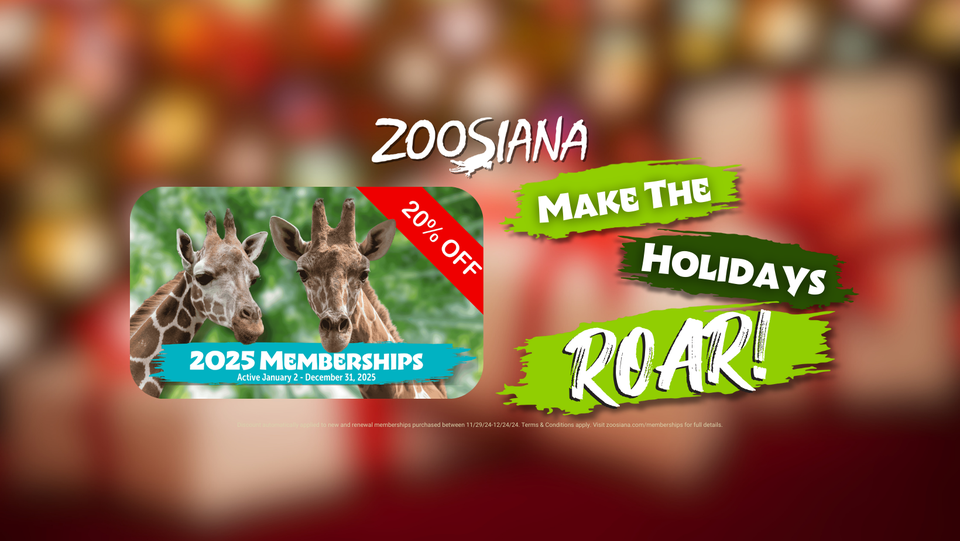
The zoo will be 33 years old in 2025, and getting to that stage where it can become a legacy for our local families and visitors alike. Matt says, “The children who have visited Zoosiana through the years bring their own children and maybe their grandchildren, and make lasting memories. Perhaps taking a family photo by the same live oak tree that they took a photo in front of 20 or 30 years earlier. I think that’s a very special attribute. It adds to our efforts to connect the community with the zoo. Ownership has never been front of mind for us. We believe that we are the stewards of the zoo and of the animals on behalf of Acadiana’s children. Everything we do there is for the children, to be an education-based program and make an opportunity to create a lifelong memory of connecting you with an animal on some level.”
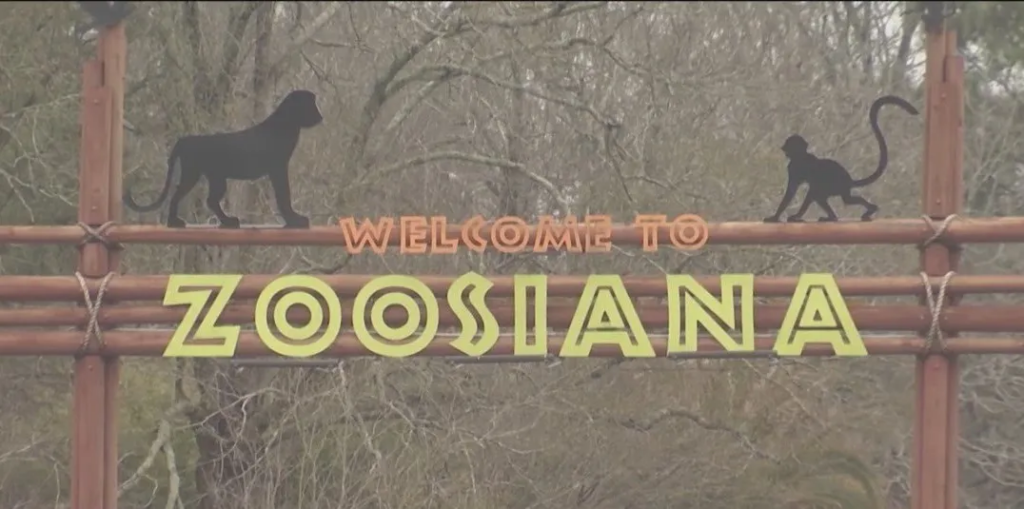
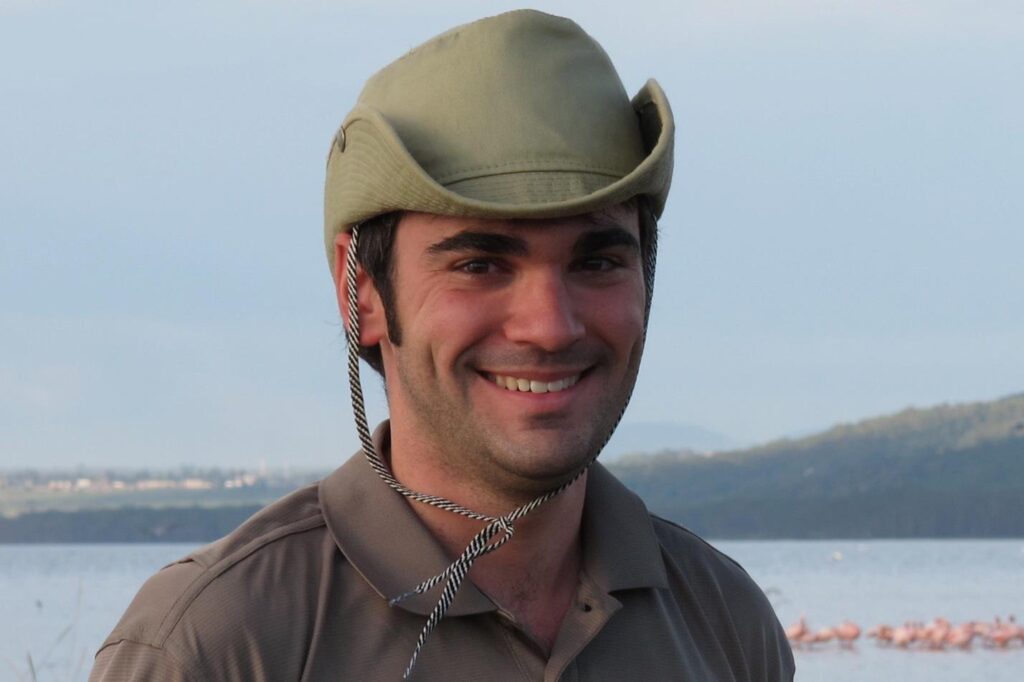
“There was no life plan to land at the zoo. We never had unusual pets growing up, just a dog and a cat. But, I was excited about the zoo from day one with dad. Not every day has been fun or easy. But I think very quickly I realized that if I could pick one thing in life, I would probably pick what I am doing at the zoo.”
The zoo is busiest in the springtime and in the comfortable October season. “With a thousand animals to care for each day, no two days are alike,” says Matt.
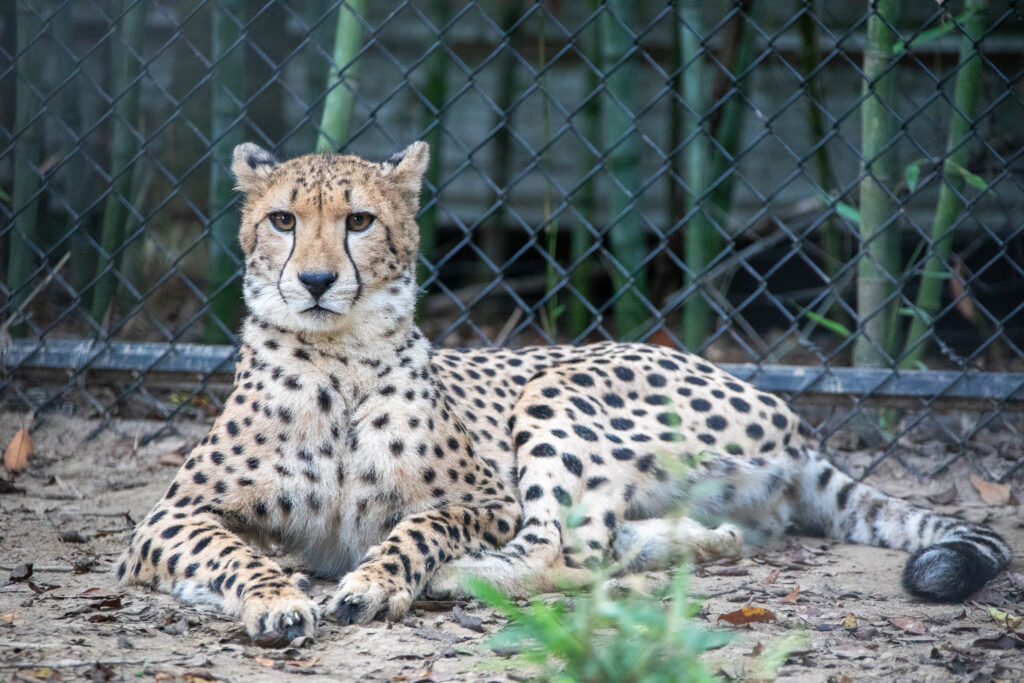
“We go through quite a bit of food and, and we order our produce, fruits and veggies from the same vendors that restaurants and cafeterias here in Lafayette order from. Its not second choice. So it’s fresh produce and fresh vegetables of of a quality that you would be happy to have on your own dinner plate.”

Matt further stated, “We’ve got an animal care team who do a phenomenal job of providing the daily care and maintenance, which include feeding, cleaning, health checks, and monitoring. Enrichment is a very big part of what we do. We want to make sure our animals have a stimulating environment that they’re able to utilize and practice their natural behaviors. It could be leaping from one perch to the next or figuring out a puzzle feeder of some kind. We do enrichment with smells, olfactory sound, and visual.”
Zoosiana has particular meal plans for their various animals, and a recipe book for the different meals that lists everything that the animals can have and cannot have. With so many different omnivores, herbivores, and carnivores, you can imagine the varying diets from species to species. Matt says, “It’s thousands of pounds of food a week. We’ve got dry grain. We’ve got raw meat for the carnivores. the giraffes get gallons of grain a day. And we serve alfalfa hay, any type of hay or grain that you can think of we probably have at the zoo.”
Giraffes are very popular and the tallest land animal. They can reach up to 18 feet tall, and their head weighs approximately 150 pounds when fully grown. Their necks have seven vertebrae, just like humans do, but they’re elongated so as to hold and manage the head that which is big as a human torso. Their heads hold two eyes that have incredible eyesight and Matt explained, “The shorter animals out on the Savanna in the wild will typically evacuate in whatever direction the giraffes are evacuating, because the giraffes can spot danger coming from a bit further away than the shorter animals can detect. They’re known as being gentle giants. For a long time it was thought that they did not vocalize at all, but there’s been some research now that they do, but at a sound frequency that human ears cannot pick up on.”

Giraffes are beautiful and the males and females feed differently to prevent interspecies competition. Typically a female giraffe will give birth while standing and the calf will fall about six feet to the ground. The mom expects the baby to stand very quickly because a predator is not going to wait for the baby to run away. “She’ll probably push baby down a couple of times. So the baby learns how to get back up,” Matt says.
Zoosiana is fortunate to be an accredited facility, and it works in a collaborative effort with other zoos around the nation for the purpose of breeding. Zoosiana may have a vibrant animal of a particular species that they would like to pair up with, a male or female, and they can work with a number of other zoos who might have the opposite situation. The relationships are intended to benefit the species and in partnership with other zoos so animals do not need to be purchased.
The Oldenburgs have maintained a very humble, practical approach to their zoological facility. It’s not flashy and shiny. You walk in and you’re under the canopy of century-old live oak trees and bamboo forests that shoot up 30 and 40 feet into the air. One of the first habitats you encounter is their cheetah habitat. Matt believes they may be the only cheetahs in the state. In Zoosiana’ efforts to connect the zoo with the local community, they felt it was important to ask the community to help name the cheetahs. The public chose to name the cheetahs after the beloved Golden Girls: Dorothy, Blanche and Rose. The three are sisters and approximately two years old.
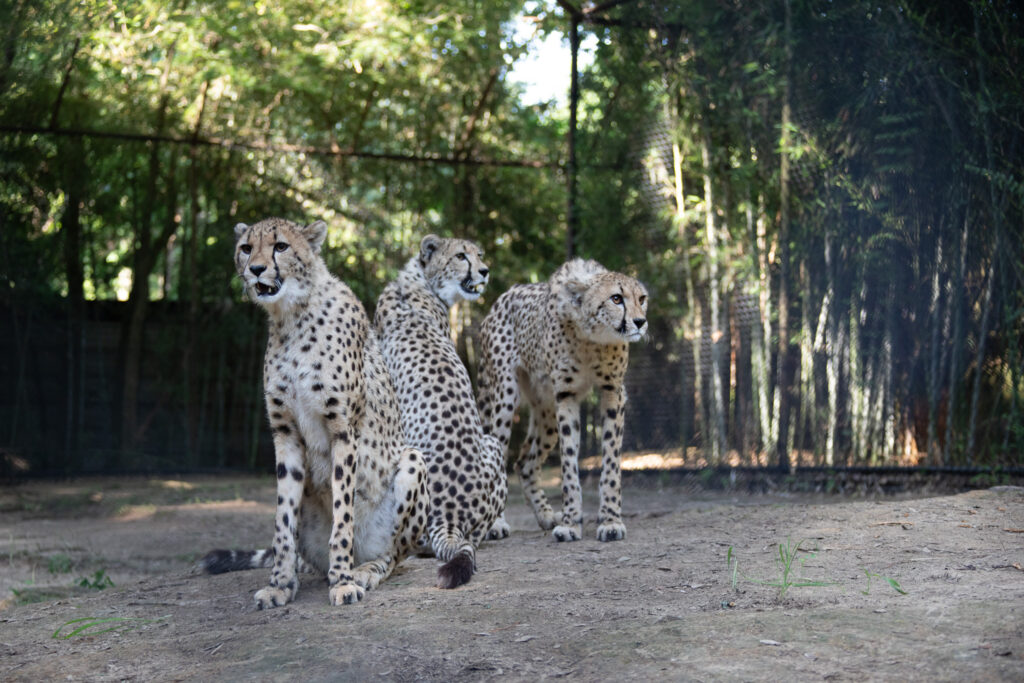
Zoosiana brought in two pygmy hippos about a month ago, which are small for hippos but still about six hundred pounds each. Bella and Noche came from South Florida and Arizona. Bella is in charge and Matt says from a physical standpoint, “Noche is stronger physically; Bella is a bit stronger from a mental standpoint.
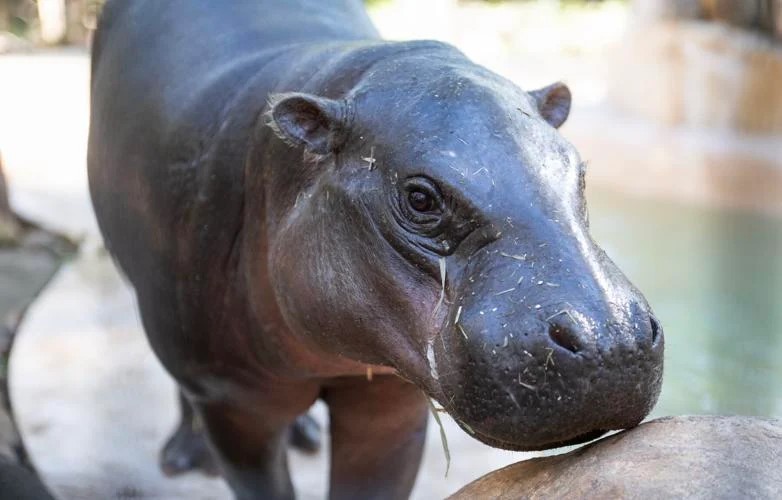
Other animals at Zoosiana include three different species of lemurs, gibbons (smallest of the apes but biggest primate at the zoo, tigers, lions, birds, macaws, zebras, American alligators, camels, a pair of clouded leopards, and East African crowned cranes.
Most primates cannot swim so they live the island life at the zoo. They won’t attempt to cross the water, because even if they learned the process of swimming, their body mass is too dense and they would sink. The primates know that instinctly and will not attempt to cross any water deeper than a couple of inches. They’ve got full access to the trees, go all the way to the top, and do their beautiful hooping calls each morning and evening to the other islands at the zoo.

Train rides offer a 3/8 mile adventure out to the zoo’s safari pasture, where you can see free ranging blackbuck and waterbuck.
There is also a strong botanical to the Zoosiana property including the oak trees, and one of them is estimated to be 350 years old, registered by the Live Oak Society.
Matt says, “It’s a labor of love keeping up the zoo. We’ve got the most incredible people who work at the zoo. From animal care to maintenance to guest services and a number of odds and ends positions around the zoo. A lot of us wear multiple hats, but I believe we’re among some of the luckiest people in the world to work at the zoo, because most of our time is outdoors. What a great place to spend your time outside. We’re in the presence of animals and we are working to connect our visitors with those animals. That’s a great way to spend your time.”
The animals are a lot smarter than most people think. “Most animals are observers, and they’ll lay back and assess the situation and are very cautious. They take their time building comfort and won’t rush into anything without getting acclimated with the situation. If you spend enough time with any one animal, either as a species or an individual, you’ll find a reason to love that animal.”
The admission rate at Zoosiana for adults is $19.99 and children, $14.99. The zoo has a membership program that will get you into the zoo all year long, and is on sale now for 20% off. Visit https://zoosiana.com/ or call (337) 837-4325 for more information.
For young teens, it’s a safe place for mom and dad to drop them off with their friend group or on a date. They can walk around, get a Coke, Icee or a stuffed animal from the gift shop, and take a couple of selfies. Birthday parties and school field trips are also popular.
Matt remembers, “We had somebody say we should replace FaceTime with FaceTime, where you’re getting rid of the screen and you’re now face to face with an animal that you never even knew existed, or a species that you never heard of, or for whatever reason, the giraffe just took a liking to you during this particular visit. And you know, he can’t get enough of you or whatever. That’s special, I think.”
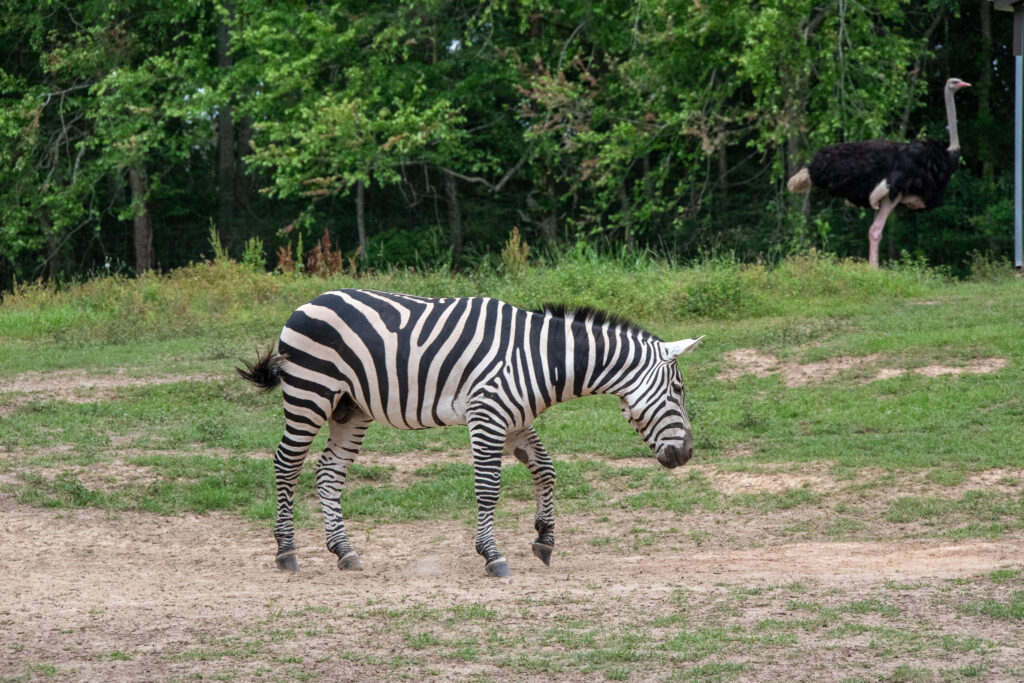
Matt says, “Some animals have bad days and good days. It’s interesting from an animal behavior standpoint, male primates typically are a little cautious around male humans because there’s a little bit of ‘are you threatening my dominance by being around me’ kind of a situation. We employ a practice of not doing things that would make that male primate think you are, in fact, challenging them. You should not make eye contact with them and don’t show them your teeth. And so if you’re in there for a particular purpose, maybe you’re cleaning the exhibit or doing a repair or an enrichment project of some kind. You’re focused on that and more or less being submissive.”
“We’re not too different from our long distance primate cousins. Most people are afraid of snakes, and most primates are afraid of snakes. And so we’ve had anecdotal situations where we were having to go in with a primate that you otherwise wouldn’t typically go in with. And we will put like a fake plush snake on our shoulders just so that they don’t come around us and we can get in to do our our task and get out pretty quickly.
Wintertime can be the hardest time of the year as most of Zoosiana’ animals are from warmer, tropical Savanna-type environments. They can handle our heat a lot better than most people assume. “Animals, are very smart. They’ll dial down their activity, eat less and move less in the warmer months to keep their body temperatures from elevating unnecessarily. In the wintertime, they’ll eat more and put on that winter coat, building up fat reserves to keep their body warmer. A body that’s digesting food is warmer than one that’s not digesting food. That’s why you see a frisky animal in that first cool snap; they’re getting their blood pumping and trying to raise their body temperature a bit. So supplement their environments by adding extra bedding, a heat source, to shelter from the elements. In the summertime, they can thermoregulate and, and provide enough self care on their own without a lot of input from us.”
Just the threat of a hurricane can involve intense planning for the animals’ safety. Zoosiana warehouses a equipment and supplies to have on hand because they can’t risk a store being out of stock of something they need, or a store not being able to reopen quickly after a storm. So if it’s a heater or tools to repair water lines, animal feed, etc., the zoo keeps an inventory on hand. They prepare as we do at home, so anything that can fly around, benches, picnic tables, etc. are all tied down,
The animals have shelters. They can go in, but some stay outside. The birds that are normally very talkative get very quiet. Matt says, “they can feel that the change in the pressure coming from the hurricane and with 45 acres and a thousand animals, hurricane prep can take days. We do everything we can that would allow us to remain open as long as we can. But at some point, what we have to do kind of forces our hand and we close. And so we’ll close typically a day or two prior to the expected arrival of a storm, because we’ve got animals that are off exhibit, no benches anywhere for people to sit on and our own staff needs to take care of their own homes.”
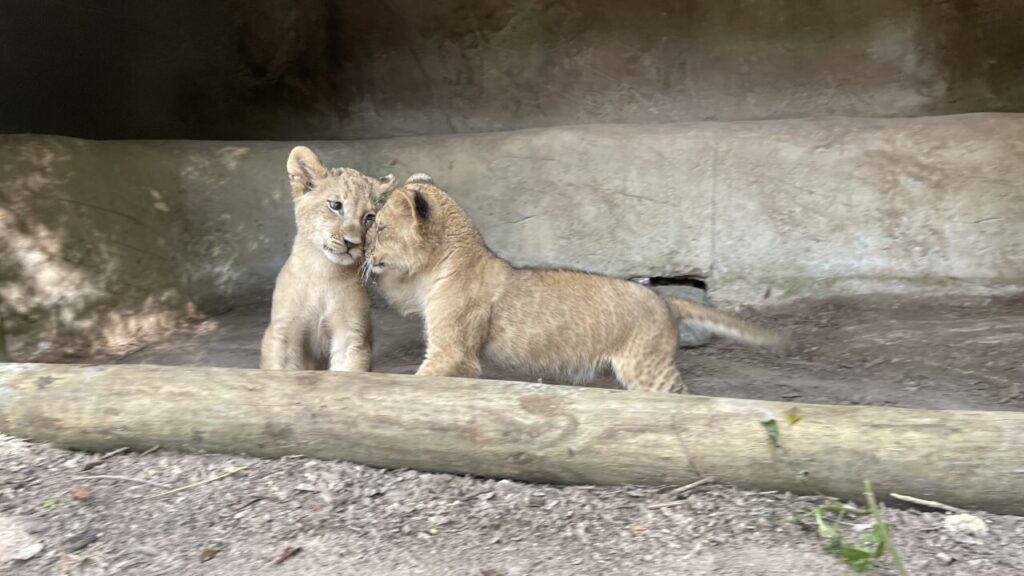
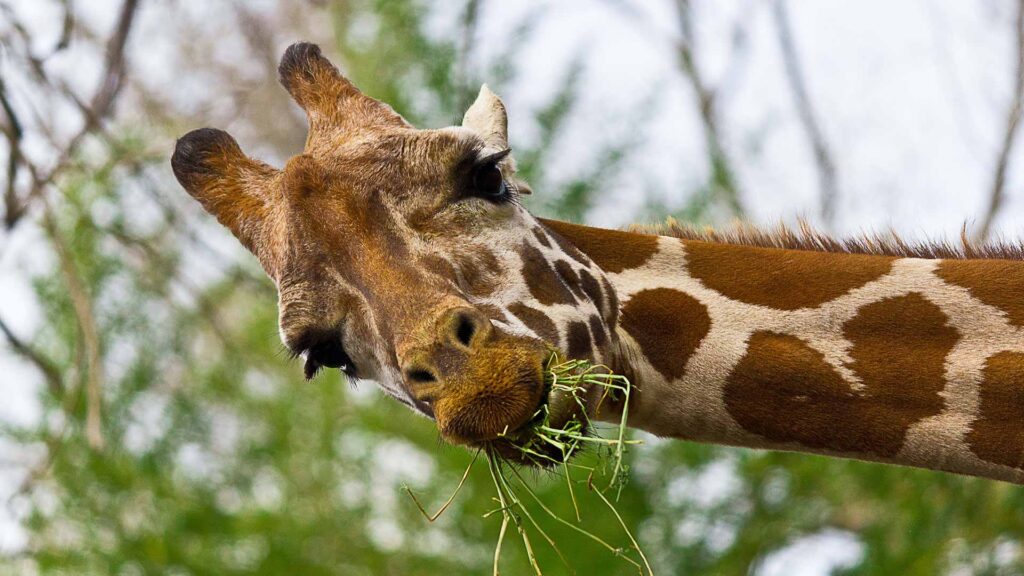
In the springtime the zoo puts on a spring themed Easter event. We decorate the zoo, give candy to the kids, have a photo op. In October, “Boo at the Zoo” with festive fall decorations, a costume contest, a photo booth, and candy is held.
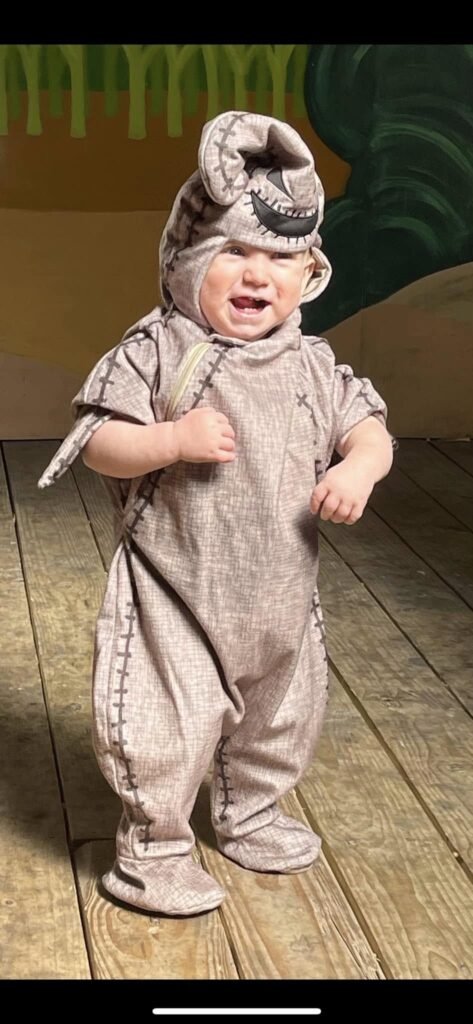
We thank Matt and George Oldenburg and the whole team at Zoosiana for providing this precious resource to all of Acadiana! Please consider joining so we can keep this privately-owned zoo in our community for generations to come!
103 حلقات
Fetch error
Hmmm there seems to be a problem fetching this series right now.
Last successful fetch was on January 06, 2025 09:59 (
What now? This series will be checked again in the next hour. If you believe it should be working, please verify the publisher's feed link below is valid and includes actual episode links. You can contact support to request the feed be immediately fetched.
Manage episode 456712673 series 1814016
Matt Oldenburg, Director of Zoosiana, is our guest today. The zoo has been a family passion for years, as it was originally purchased by Matt’s father, George Oldenburg, in 2002, after a successful banking career.
George transitioned into zoo ownership to pursue his love for animals. Over the years, Matt took on a leadership role, managing the zoo’s operations and its expansive collection of over 1,000 animals spanning 150 species. Never dreaming he would run the zoo, Matt majored in wildlife biology, as well as marketing and management. While his schooling came in handy, running a zoo is a field of study that you learn on the job.

Zoosiana, one of the few privately owned and accredited zoos in the U.S., is known for its education and memory-making opportunities, community engagement, and family-friendly attractions. It features animal shows, a petting zoo, a Louisiana swamp exhibit, and unique animals like golden-striped Bengal tigers, giraffes, exotic birds, and much, much more. Incredibly, the zoo welcmes over 150,000 visitors annually. Zoosiana is open 9 to 5 daily, seven days a week, weather permitting, except for major holidays and hurricanes.

The zoo will be 33 years old in 2025, and getting to that stage where it can become a legacy for our local families and visitors alike. Matt says, “The children who have visited Zoosiana through the years bring their own children and maybe their grandchildren, and make lasting memories. Perhaps taking a family photo by the same live oak tree that they took a photo in front of 20 or 30 years earlier. I think that’s a very special attribute. It adds to our efforts to connect the community with the zoo. Ownership has never been front of mind for us. We believe that we are the stewards of the zoo and of the animals on behalf of Acadiana’s children. Everything we do there is for the children, to be an education-based program and make an opportunity to create a lifelong memory of connecting you with an animal on some level.”


“There was no life plan to land at the zoo. We never had unusual pets growing up, just a dog and a cat. But, I was excited about the zoo from day one with dad. Not every day has been fun or easy. But I think very quickly I realized that if I could pick one thing in life, I would probably pick what I am doing at the zoo.”
The zoo is busiest in the springtime and in the comfortable October season. “With a thousand animals to care for each day, no two days are alike,” says Matt.

“We go through quite a bit of food and, and we order our produce, fruits and veggies from the same vendors that restaurants and cafeterias here in Lafayette order from. Its not second choice. So it’s fresh produce and fresh vegetables of of a quality that you would be happy to have on your own dinner plate.”

Matt further stated, “We’ve got an animal care team who do a phenomenal job of providing the daily care and maintenance, which include feeding, cleaning, health checks, and monitoring. Enrichment is a very big part of what we do. We want to make sure our animals have a stimulating environment that they’re able to utilize and practice their natural behaviors. It could be leaping from one perch to the next or figuring out a puzzle feeder of some kind. We do enrichment with smells, olfactory sound, and visual.”
Zoosiana has particular meal plans for their various animals, and a recipe book for the different meals that lists everything that the animals can have and cannot have. With so many different omnivores, herbivores, and carnivores, you can imagine the varying diets from species to species. Matt says, “It’s thousands of pounds of food a week. We’ve got dry grain. We’ve got raw meat for the carnivores. the giraffes get gallons of grain a day. And we serve alfalfa hay, any type of hay or grain that you can think of we probably have at the zoo.”
Giraffes are very popular and the tallest land animal. They can reach up to 18 feet tall, and their head weighs approximately 150 pounds when fully grown. Their necks have seven vertebrae, just like humans do, but they’re elongated so as to hold and manage the head that which is big as a human torso. Their heads hold two eyes that have incredible eyesight and Matt explained, “The shorter animals out on the Savanna in the wild will typically evacuate in whatever direction the giraffes are evacuating, because the giraffes can spot danger coming from a bit further away than the shorter animals can detect. They’re known as being gentle giants. For a long time it was thought that they did not vocalize at all, but there’s been some research now that they do, but at a sound frequency that human ears cannot pick up on.”

Giraffes are beautiful and the males and females feed differently to prevent interspecies competition. Typically a female giraffe will give birth while standing and the calf will fall about six feet to the ground. The mom expects the baby to stand very quickly because a predator is not going to wait for the baby to run away. “She’ll probably push baby down a couple of times. So the baby learns how to get back up,” Matt says.
Zoosiana is fortunate to be an accredited facility, and it works in a collaborative effort with other zoos around the nation for the purpose of breeding. Zoosiana may have a vibrant animal of a particular species that they would like to pair up with, a male or female, and they can work with a number of other zoos who might have the opposite situation. The relationships are intended to benefit the species and in partnership with other zoos so animals do not need to be purchased.
The Oldenburgs have maintained a very humble, practical approach to their zoological facility. It’s not flashy and shiny. You walk in and you’re under the canopy of century-old live oak trees and bamboo forests that shoot up 30 and 40 feet into the air. One of the first habitats you encounter is their cheetah habitat. Matt believes they may be the only cheetahs in the state. In Zoosiana’ efforts to connect the zoo with the local community, they felt it was important to ask the community to help name the cheetahs. The public chose to name the cheetahs after the beloved Golden Girls: Dorothy, Blanche and Rose. The three are sisters and approximately two years old.

Zoosiana brought in two pygmy hippos about a month ago, which are small for hippos but still about six hundred pounds each. Bella and Noche came from South Florida and Arizona. Bella is in charge and Matt says from a physical standpoint, “Noche is stronger physically; Bella is a bit stronger from a mental standpoint.

Other animals at Zoosiana include three different species of lemurs, gibbons (smallest of the apes but biggest primate at the zoo, tigers, lions, birds, macaws, zebras, American alligators, camels, a pair of clouded leopards, and East African crowned cranes.
Most primates cannot swim so they live the island life at the zoo. They won’t attempt to cross the water, because even if they learned the process of swimming, their body mass is too dense and they would sink. The primates know that instinctly and will not attempt to cross any water deeper than a couple of inches. They’ve got full access to the trees, go all the way to the top, and do their beautiful hooping calls each morning and evening to the other islands at the zoo.

Train rides offer a 3/8 mile adventure out to the zoo’s safari pasture, where you can see free ranging blackbuck and waterbuck.
There is also a strong botanical to the Zoosiana property including the oak trees, and one of them is estimated to be 350 years old, registered by the Live Oak Society.
Matt says, “It’s a labor of love keeping up the zoo. We’ve got the most incredible people who work at the zoo. From animal care to maintenance to guest services and a number of odds and ends positions around the zoo. A lot of us wear multiple hats, but I believe we’re among some of the luckiest people in the world to work at the zoo, because most of our time is outdoors. What a great place to spend your time outside. We’re in the presence of animals and we are working to connect our visitors with those animals. That’s a great way to spend your time.”
The animals are a lot smarter than most people think. “Most animals are observers, and they’ll lay back and assess the situation and are very cautious. They take their time building comfort and won’t rush into anything without getting acclimated with the situation. If you spend enough time with any one animal, either as a species or an individual, you’ll find a reason to love that animal.”
The admission rate at Zoosiana for adults is $19.99 and children, $14.99. The zoo has a membership program that will get you into the zoo all year long, and is on sale now for 20% off. Visit https://zoosiana.com/ or call (337) 837-4325 for more information.
For young teens, it’s a safe place for mom and dad to drop them off with their friend group or on a date. They can walk around, get a Coke, Icee or a stuffed animal from the gift shop, and take a couple of selfies. Birthday parties and school field trips are also popular.
Matt remembers, “We had somebody say we should replace FaceTime with FaceTime, where you’re getting rid of the screen and you’re now face to face with an animal that you never even knew existed, or a species that you never heard of, or for whatever reason, the giraffe just took a liking to you during this particular visit. And you know, he can’t get enough of you or whatever. That’s special, I think.”

Matt says, “Some animals have bad days and good days. It’s interesting from an animal behavior standpoint, male primates typically are a little cautious around male humans because there’s a little bit of ‘are you threatening my dominance by being around me’ kind of a situation. We employ a practice of not doing things that would make that male primate think you are, in fact, challenging them. You should not make eye contact with them and don’t show them your teeth. And so if you’re in there for a particular purpose, maybe you’re cleaning the exhibit or doing a repair or an enrichment project of some kind. You’re focused on that and more or less being submissive.”
“We’re not too different from our long distance primate cousins. Most people are afraid of snakes, and most primates are afraid of snakes. And so we’ve had anecdotal situations where we were having to go in with a primate that you otherwise wouldn’t typically go in with. And we will put like a fake plush snake on our shoulders just so that they don’t come around us and we can get in to do our our task and get out pretty quickly.
Wintertime can be the hardest time of the year as most of Zoosiana’ animals are from warmer, tropical Savanna-type environments. They can handle our heat a lot better than most people assume. “Animals, are very smart. They’ll dial down their activity, eat less and move less in the warmer months to keep their body temperatures from elevating unnecessarily. In the wintertime, they’ll eat more and put on that winter coat, building up fat reserves to keep their body warmer. A body that’s digesting food is warmer than one that’s not digesting food. That’s why you see a frisky animal in that first cool snap; they’re getting their blood pumping and trying to raise their body temperature a bit. So supplement their environments by adding extra bedding, a heat source, to shelter from the elements. In the summertime, they can thermoregulate and, and provide enough self care on their own without a lot of input from us.”
Just the threat of a hurricane can involve intense planning for the animals’ safety. Zoosiana warehouses a equipment and supplies to have on hand because they can’t risk a store being out of stock of something they need, or a store not being able to reopen quickly after a storm. So if it’s a heater or tools to repair water lines, animal feed, etc., the zoo keeps an inventory on hand. They prepare as we do at home, so anything that can fly around, benches, picnic tables, etc. are all tied down,
The animals have shelters. They can go in, but some stay outside. The birds that are normally very talkative get very quiet. Matt says, “they can feel that the change in the pressure coming from the hurricane and with 45 acres and a thousand animals, hurricane prep can take days. We do everything we can that would allow us to remain open as long as we can. But at some point, what we have to do kind of forces our hand and we close. And so we’ll close typically a day or two prior to the expected arrival of a storm, because we’ve got animals that are off exhibit, no benches anywhere for people to sit on and our own staff needs to take care of their own homes.”


In the springtime the zoo puts on a spring themed Easter event. We decorate the zoo, give candy to the kids, have a photo op. In October, “Boo at the Zoo” with festive fall decorations, a costume contest, a photo booth, and candy is held.

We thank Matt and George Oldenburg and the whole team at Zoosiana for providing this precious resource to all of Acadiana! Please consider joining so we can keep this privately-owned zoo in our community for generations to come!
103 حلقات
كل الحلقات
×مرحبًا بك في مشغل أف ام!
يقوم برنامج مشغل أف أم بمسح الويب للحصول على بودكاست عالية الجودة لتستمتع بها الآن. إنه أفضل تطبيق بودكاست ويعمل على أجهزة اندرويد والأيفون والويب. قم بالتسجيل لمزامنة الاشتراكات عبر الأجهزة.




